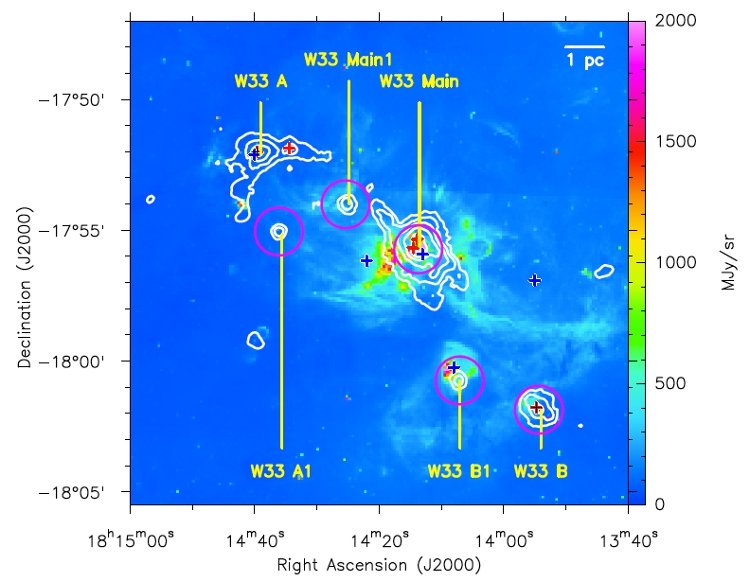| EPoS Contribution |
|
Chemical Evolution in the High-Mass Star Forming Complex W33
Katharina Immer MPIfR, Bonn, DE | |
| The W33 complex is an ideal object to study high-mass star formation since it contains molecular clouds in different evolutionary stages within a small area on the sky. Since the molecular clouds in W33 are located at similar distances (~2.4 kpc) and probably contained the same birth material, a comparative chemical study of these clouds along an evolutionary sequence (from quiescent dark clouds to active H II regions) is feasible. I will present spectral line mosaic observations of six W33 clouds with the Submillimeter Array (SMA) at 230 GHz and the Atacama Pathfinder Experiment (APEX) telescope at 280 GHz, tracing the chemical composition of the clouds on different scales. In the APEX and SMA datasets, 27 transitions of 10 different molecules and 38 transitions of 14 different molecules, respectively, were detected, from simple molecules like CO with widespread emission to complex molecules like CH3CCH or CH3OCHO with compact emission. The spectra of both datasets show significant differences in the chemistry of the clouds, supporting the identification of different evolutionary stages in the complex. On smaller scales, traced by the SMA data, the number of complex molecules increases up to the hot core phase. The SMA spectra of the H II region almost do not show complex molecules anymore which probably indicates photo-dissociation of the complex molecules due to the energetic radiation in the H II region. However, the APEX spectra of the H II region show emission of the highest number of complex molecules in the clouds. Thus, the chemical complexity and diversity on larger scales, traced by the APEX data, increases along the evolutionary sequence up to the H II region phase. | |
 | |
| Caption: Background: Warm dust emission at 8 um (Spitzer survey). Contours: Cold dust emission at 870 um (ATLASGAL survey). Red crosses: Water masers. Black crosses: Methanol masers. Blue crosses: Star clusters. Pink circles: SMA map sizes. The images shows the six molecular clumps of the W33 complex which are in different evolutionary stages, from quiescent cold clouds to the highly active H II region W33 Main. | |
| Collaborators: R. Galvan-Madrid, ESO, Germany K. M. Menten, MPIfR, Germany M. J. Reid, CfA, USA C. Koenig, MPIfR, Germany H. B. Liu, ASIAA, Taiwan |
Suggested Session:
Chemistry |

